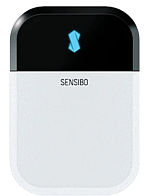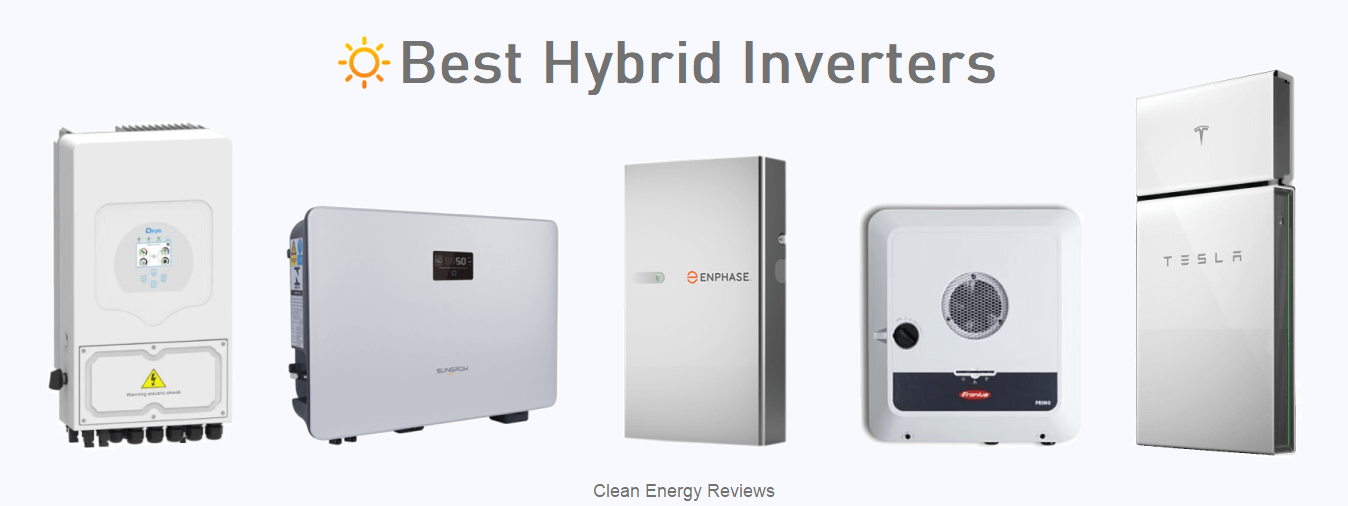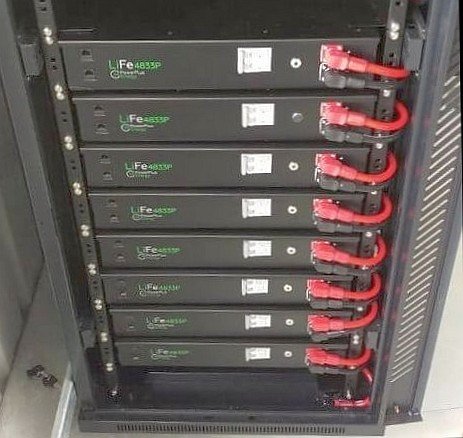Guide to home batteries and off-grid solar in Australia
The huge leap forward in battery storage technology has seen a surge in interest from people looking to go off-grid, store their own solar energy (self-use) or become energy-independent. However, the rapid pace of technology development has resulted in some confusion over what is achievable and which system is best suited to an individual’s needs. While trained solar installers offer very good advice, much of the public and media do not understand the various solar / battery storage system capabilities and limitations.
Common battery-related questions
As an experienced solar battery system designer, below are the most common battery-related questions I get asked. In this article, I will answer these questions and provide examples of ways to help you navigate the advancing and often confusing home battery storage market.
Which battery storage system is best?
What size battery do I need?
Should you get a battery storage system?
How long will a battery storage system last?
How much does a battery system cost?
Which battery storage system is best?
This might seem like a straightforward question, but it is not easy to answer because there is no perfect battery solution. Every household's energy needs are different, and a wide variety of battery systems are available. For example, the large 13kWh Tesla Powerwall 2 battery is very popular, but the high cost makes it unaffordable for many households. Luckily, there are many other reliable, cost-effective battery options from brands like Goodwe, BYD, and Sungrow. With this in mind, choosing the best battery for your home depends on several important factors:
Your household's daily energy consumption (kWh)
Frequency of blackouts and backup power requirements
Your solar size and how much surplus solar power is available
Plans for future battery capacity expansion
Your budget and expected payback
Once you have considered these factors, you will be able to determine what size and type of battery will be best suited for your needs. For those who want to skip the explanation and jump straight into learning about the best and most reliable batteries and off-grid solar systems, check out these other articles:
What is the best battery size for your home?
The optimum battery size for your needs can be determined once you understand your energy usage and backup power requirements. If you have solar installed, your system monitoring or electricity bill should show you roughly how much solar you export to the grid (sell) per day or month. This will enable you to understand how much excess solar you have available to charge a battery. See the section below, ‘Understanding your energy consumption’, for more information.
Avoiding Size Pitfalls: A one-size-fits-all approach to battery sizing can lead to performance issues. Undersized batteries may fail to meet household demand, while oversized ones may not receive sufficient power from the solar array, especially during winter months. The selection and sizing of batteries should align with solar size, system type, backup requirements, and evening energy consumption. Our online solar and battery calculator will quickly help you determine what size battery will suit your needs.
Modularity and Scalability: Thankfully, most home battery systems are designed to be modular and scalable, allowing homeowners to increase their storage capacity if required. This flexibility ensures that the battery system can grow based on energy consumption patterns and evolving household requirements such as adding an home EV charger.
Should you get a battery storage system?
For households that do not suffer from blackouts or power disruptions, the simple answer is no; you don't need batteries to take full advantage of solar. For many people, the cost of a battery system is too high, but this doesn’t mean you can’t make the most out of installing solar on your home. Generally, installing solar alone can reduce your electricity cost by 60 to 70%.
Sensibo smart remote air-conditioner controller.
It is generally far more cost-effective for those at home during the day or work at home to install a common grid-connected solar system (approx $6,000 for a 6.5kW system) and use the solar energy directly. For example, it is possible to run energy-intensive appliances such as dishwashers, air-conditioners and washing machines (not all simultaneously) for free using your solar energy during the day. Also, many ‘smart’ appliances can now be remotely turned on or activated using timers to operate when there is excess solar energy, rather than sending it to the grid for very little return. Also, you can easily add a battery later using an AC battery system available, such as the Sonnen ECO or Tesla Powerwall 2. Many modern solar inverters are also ‘battery-ready’ hybrid inverters, which makes it easy to add battery storage in the future.
The well known catch power solar hot water power diverter.
Using hot water as a battery - Solar diverters
Electric hot water systems are extremely energy-intensive and often account for around a third of annual energy costs (unless you have gas hot water). Electric element hot water systems are usually set to heat your water using cheaper off-peak electricity but a grid-tie solar system together with a clever device called a solar diverter to divert your excess solar energy to your hot water system can maximise your solar consumption, saving you money. By doing this, you are effectively using your hot water as a battery, with the energy stored as heat. There are several well-known solar diverters available, such as those from Catch power, ImmerSun and AWS SunMate.
How long will a battery storage system last?
This is a very good question, and there is no firm answer, as most modern home battery systems have only been available for five to six years. However, based on the information we have gathered so far and the testing we have conducted, it would suggest that most modern lithium battery systems will last between 8 and 15 years, depending on the operating conditions. Most home battery systems have a 10-year warranty, which guarantees the battery will retain at least 60 to 80% of its original storage capacity after the 10-year period. Based on this information and other factors, we calculated the estimated lifespan and operating costs over the life of the battery in our detailed home battery storage guide.
How much does a solar battery system cost?
Battery storage is measured in kilowatt-hours (kWh) and typically costs from $750 to $1000 per kWh, plus installation and inverter costs. Therefore, a moderately sized 6kWh battery will cost around $ 5,000, plus the cost of a compatible hybrid battery inverter and installation. Solar panels, on the other hand, are relatively cheap, with an average size of 8kW solar array (roughly 18 panels) costing around $6000 to $8000 when installed in Australia. Note that the cost of solar power in the USA is more than double this figure. Off-grid solar systems are also much more expensive due to the large battery systems and powerful off-grid inverters required.
Four common solar battery system prices in Australia *
Click on the options above to see full details, capabilities and cost breakdowns.
* Note: prices are in Australian dollars and are estimates only - including all parts and labour for a hybrid solar installation on an efficient 3-bedroom home with an average energy consumption of 12kWh per day. If your energy use is higher, for example, 24kWh per day, then the cost would be 60-70% higher due to the additional solar and battery cost - See the following sections for tips on how to reduce your energy usage.
Understanding your energy consumption!
The correct way to 'accurately' size a solar & battery system is by first monitoring your household electricity consumption and using this data to size a suitable solar array and battery. You can get this data in several ways, either by using an aftermarket energy meter or by downloading your smart meter data (if you have one installed). Below, we explain how to obtain smart meter data.
Use Your Smart Meter Data
Two common smart meters used to measure electricity consumption.
Most modern electricity ‘smart’ meters log your electricity consumption every 15 minutes and you can obtain this data for up to the last 2 years from your local electricity network operator. Do not confuse this with your electricity retailer who sends you your bills. The network operators own the poles, wires and meters. There are many network operators around Australia. In Victoria alone there are 4 main operators shown below.
Click the links below to sign up and get your smart meter data in Australia.
Ausnet (VIC)
United Energy (VIC)
Citipower/Powercore (VIC)
Jemena (VIC)
Ausgrid (NSW)
Energex (QLD)
Synergy (WA)
If you are building a new home, then you will need to estimate your energy consumption based on a load table. A load table or load calculator lists all your major appliances and the approximate energy used per appliance to determine the total electricity used per day in kWh. A professional solar installer can help with this process.
If your solar array is undersized and your battery capacity is oversized, you risk not generating enough solar energy to charge your battery, especially during the shorter winter days. Or if your household consumption is high during the day, you may directly use all your solar energy and not require a battery at all.
The amount of energy your home consumes per day is measured in kilowatt-hours (kWh) and will be listed on your electricity bill. Creating a more efficient home may mean you can achieve more savings by using a standard grid-connect solar system rather than installing a more expensive hybrid battery system.
Energy efficiency can save you more than adding a battery
Most Australian homes are very inefficient and use around 20kWh of electricity per day. Naturally, if you create a more efficient home that consumes less electricity, your costs will be lower. Simple things like adding extra insulation, LED lighting and solar-boosted hot water can make a huge difference. The amount of energy your home consumes per day, measured in kilowatt-hours (kWh), will be listed on your electricity bill. The more information you have about your energy use, the better and will enable you to optimise or reduce your electricity costs.
Efficient heat-pump hot water unit
There are many other ways to optimise your use of solar. A good example is running electric hot water systems directly from a solar PV system during the day rather than using off-peak power (explained in more detail below). Also, replacing an old, inefficient gas or electric hot water with an efficient heat-pump hot water system can save a lot of energy and significantly reduce costs. Creating a more efficient home may mean you can achieve more savings by using a standard grid-connect solar system rather than installing a more expensive battery system on an inefficient home - Refer to the next section.
It is often worthwhile investing in new, more efficient appliances like fridges, freezers, heat pumps and solar hot water systems to reduce your total energy use and, in turn, reduce the size and cost of a solar / battery system to power your home.
How can home batteries prevent grid wide blackouts?
It is not well known that multiple small home batteries have the ability to stabilize the grid by selling power back during peak times (such as during heatwaves), thus eliminating the need for expensive gas backup power stations used only several days a year. This works by having a 'remote' control system that can feed energy back into the grid from hundreds or even thousands of home and commercial battery systems simultaneously. The Australian startup 'Reposit Power' is already using this model, and the German battery manufacturer 'Sonnen' is also setting up a similar system.
Off-grid Solar Systems
To answer the common question about taking your home off-grid, I generally say to most people, "if you already have the grid-connected to your home, then it makes no sense to go completely off-grid because the cost is too high”. Off-grid solar systems require a large, expensive battery to store energy for several days of bad weather and an auto-start back-up generator for the winter months (in colder areas)". There is also the cost of fuel to run a backup generator, maintenance, etc., so for most people, it just doesn't make economic sense. Why not use the grid as your backup power source and feed your excess solar energy into the grid for some return? If you live in a remote location and have no choice but to install an off-grid power system, I recommend using a quality off-grid inverter. Many cheaper hybrid inverters can operate off-grid, but most are only suitable for smaller cabins and summer use.
Backup Generators
Living off-grid full-time means that for most of the year, you can rely on your solar/wind generation, but there will come a time when the weather turns sour for a prolonged period, and you don't have enough juice left in the battery. Also, there may be a fault or repair in the system at some stage, so you will usually need some backup power source, such as a generator. In temperate, colder climates where the winter days are much shorter (depending on your energy use), you will generally need to run a backup generator once a week to top up the batteries during the few winter months. If you have continuous bad weather for a longer period, then the generator will have to run for longer. To help make this a seamless experience, the most advanced off-grid inverters have built-in generator control systems to start and run the backup generator automatically.
Typically, with a correctly sized solar and battery system, the backup generator will only be used for 5% or less of your electricity needs. A solar array will cover 95% to 98% of the electricity consumption in most locations without severe shading issues.
Wind Turbines for Home Use
I often get asked, ‘Can I use a small-scale wind generator instead of solar?’ This is a tricky one, and generally, the answer is no. This might sound surprising, but there is a good reason why small-scale turbines are much less effective than solar. Let me explain by referencing the image below:
A comparison of large scale and small scale wind turbines - Image Credit Windustry
Large-scale wind turbines used on wind farms work exceptionally well and are generally located in areas that have been recorded to have consistent wind. These tall turbines are high enough to capture the ‘clean’ or non-turbulent airflow which makes them very reliable and efficient. The very long blades (up to 75m long) have a vast ‘swept area’ and capture a large amount of energy.
Small-scale residential wind turbines are generally very inefficient.
On the other hand, generally have poor performance due to their small size and location. Many people assume the wind is well suited for their location, but the reality is the wind is usually very turbulent and not efficient for a small-scale turbine. In order to achieve full power output from a turbine, it needs to be installed at twice the height of the surrounding trees and buildings. Then there is the cost: a small 1000W turbine can easily cost $6K installed on a 15-meter pole. If you compare this to solar, you could purchase 15 x 400W panels for the exact cost, which would provide up to 6000W of power. Plus, solar panels have no moving parts and virtually no maintenance, so the numbers speak for themselves. However, there are some situations where a combination of wind and solar may work well.


















Bidirectional EV chargers are sophisticated EV chargers capable of two-way charging; charging an EV and discharging energy back into the grid, known as V2G. In this article, we review the Bidirectional EV chargers currently available or under development.